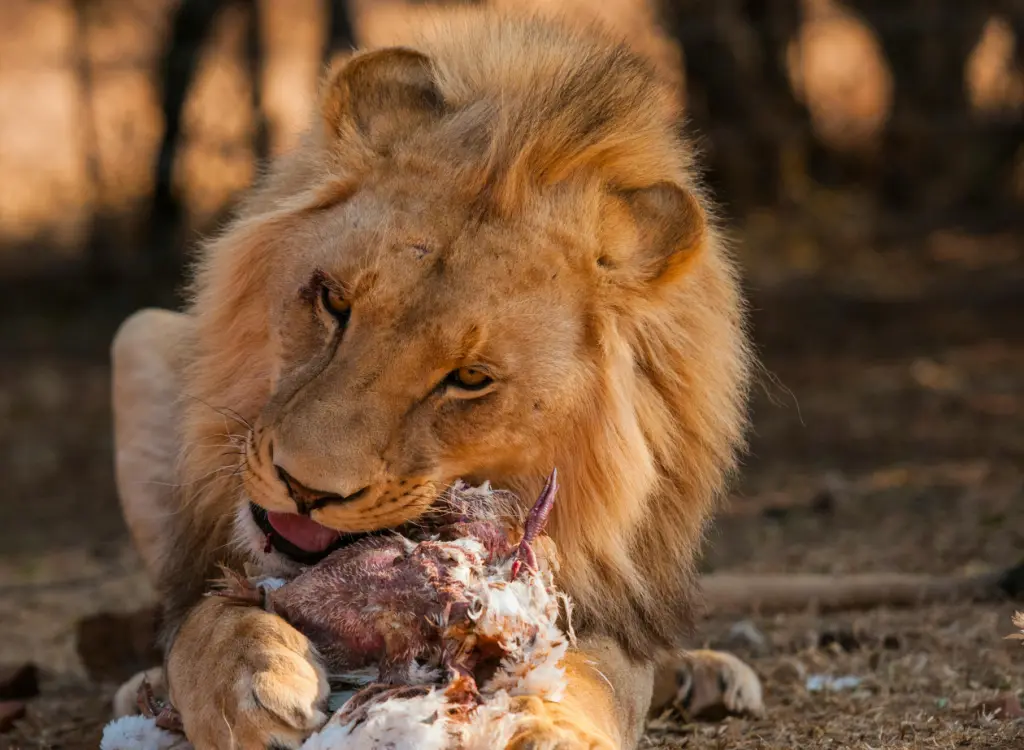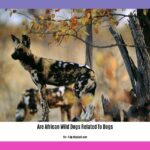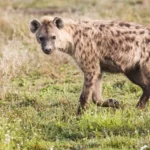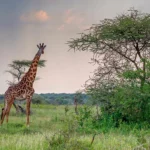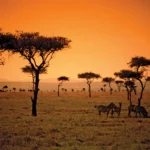Lions: the rulers of the African savanna. They’re not just mighty hunters but also fascinating foodies. Let’s dive into what these majestic beasts eat and how it shapes their wild existence. Get ready to explore the culinary secrets of lions and uncover the delicate balance they maintain in this untamed wilderness.
What Lions Gorge on in the African Grasslands: An Exciting Food Safari
Lions, the majestic rulers of the African savanna, are notorious for their carnivorous ways. These apex predators have an insatiable appetite for meat, and their menu is as diverse as the savanna itself.
The Lion’s Meat Buffet
Lions are experts at hunting large animals like zebras, wildebeests, and antelopes. These hefty creatures weigh between 100 and 1,000 pounds, providing lions with a substantial feast. However, when these bigger game are hard to come by, lions turn to smaller mammals such as rodents and reptiles for sustenance.
The Art of Scavenging
Not all of a lion’s meals come from their hunting prowess. Lions are also opportunistic scavengers, eagerly devouring the leftovers from kills made by other predators or succumbed to natural causes.
Domestic Delicacies
If the opportunity arises, lions will not hesitate to indulge in domestic livestock like cows and sheep. These farmyard treats make up a tempting part of their diet when readily available.
The Pride’s Hunting Strategy
Lions are pack hunters, working together in close-knit groups called prides. Their tactic? Encircle their unsuspecting prey and pounce with their powerful jaws. This coordinated attack gives them a strategic advantage over their victims.
Factors Influencing the Lion’s Menu
The savanna’s environment plays a crucial role in shaping the lion’s diet. Lions living in dense forests may target smaller animals due to the limited hunting ground. On the other hand, those roaming open grasslands have a wider selection of large prey to choose from.
Additional Lion Diet Delights
- Hippos: Lions have been known to take down these massive creatures despite their formidable size.
- Crocodiles: Even these cold-blooded reptiles can become a tasty snack for hungry lions.
- Other Lions: In rare cases, lions may resort to cannibalism, consuming members of their own species.
The Lion’s Vital Role
Lions not only satisfy their hunger but also play a significant ecological role in the African savanna. By controlling the populations of other animals, they maintain the delicate balance of the ecosystem. Additionally, their scavenging behavior helps eliminate decaying carcasses, supporting the savanna’s cleanliness.
Frequently Asked Lion-Related Questions
- Lion Lifespan: On average, lions live for 10-15 years in the wild.
- Lion Pregnancy: Lionesses have a gestation period of about 110 days, usually giving birth to 2-4 cubs.
- Male vs. Female Lions: Male lions are easily distinguished by their majestic manes, while females lack this distinctive feature.
- Pride Dynamics: Male lions typically lead the pride, protecting the females and cubs from danger.
If you want to dig deeper into the subject of the savanna, just click on the underlined keyword and you will be redirected to a whole new world of information!
Facts about the savanna, Plants in the savanna, and What animals live in the savanna.
How do Lions Identify and Select their Prey within the Savanna Ecosystem?
Imagine you’re out on a safari in the African savanna. You see a pride of lions prowling through the tall grass, their eyes piercing and their muscles rippling. How do they find their next meal in this vast and unforgiving wilderness?
Well, lions aren’t just big cats; they’re also incredibly clever hunters. They have a whole arsenal of senses and strategies they use to track down their prey.
Sensing Their Targets
Lions have eyes like hawks. They can see movement from miles away, so even if their prey is trying to hide, chances are they’ll spot it. They also have amazing hearing. They can pick up the faintest rustle of leaves, so they can pinpoint prey even if it’s deep in the bushes. And get this: their sense of smell is so strong, they can track prey by its scent for hours!
Picking Their Victims
Lions aren’t indiscriminate eaters. They’re looking for animals that are easy to catch and packed with nutrients. So they usually go after herbivores – animals that eat plants. They especially like to target young, weak, or sick animals. That’s not only to make the kill easier, but also to help keep the herbivore population healthy. If they took out too many strong and healthy animals, it could disrupt the whole ecosystem.
Hunting Techniques
When it comes to hunting, lions have a few tricks up their sleeves. They’re either ninjas in disguise or masters of teamwork, depending on the situation.
- Ambush: They hide in the bushes or tall grass and wait for their prey to come to them. Then, pounce!
- Stalking: They slowly and quietly follow their prey, getting closer and closer until they’re in striking distance.
- Pride hunting: The whole pride works together to surround their target, cutting off its escape routes and wearing it down until they can take it down.
Survival of the Savanna
Lions play a vital role in the savanna ecosystem. By selectively choosing their prey, they help control herbivore populations and keep the ecosystem in balance. It’s like they’re nature’s own pest control! Understanding how lions hunt and feed gives us a deeper appreciation for these magnificent predators and their intricate relationship with their environment.
Unique Hunting Strategies Employed by Lions for Effective Prey Capture in the Savanna
Lions, the kings and queens of the African savanna, are masters of the hunt. They’ve got a bag of tricks that they use to take down their meals, from stealthy stalking to teamwork that would make a sports coach proud.
Cooperative Hunting: Teamwork Makes the Dream Work
Lions aren’t your average loner hunters. They’re like the superheroes of the savanna, working together to take down big prey like buffalo and zebras. They’ll surround their target like a pack of wolves, isolating the weakest or slowest animal and then pouncing on it with lightning speed.
Step-by-Step Cooperative Hunting:
- Surround the prey to isolate it.
- Assign roles: some lions will distract the prey while others move in for the kill.
- Attack in coordination, with each lion using its strength and speed to bring down the target.
Stalking: The Art of Stealth
When it comes to hunting smaller antelopes, lions have got a secret weapon: patience. They’ll lie in wait, blending into the grass and trees like camouflage experts. Then, like a bolt of lightning, they’ll charge at their target, ankle-tapping it to trip it up. It’s almost like they’re playing a game of tag, but with much more serious consequences!
Ankle-Tapping: No Ankle, No Chance
Ankle-tapping is a special hunting move that lions have perfected. It’s like a karate chop to the ankle, but instead of a human foot, it’s a massive antelope. The lion’s powerful paw lands a hard blow, causing the antelope to lose its balance and give the lion a clear shot at the neck for the kill.
The Lions’ Role in the Savanna
Lions are not just killing machines. They play an important part in keeping the savanna healthy. By hunting weaker or sick animals, they help to control animal populations and keep the environment in balance. It’s like the lions are the savanna’s own team of pest control, making sure there’s enough food and resources for everyone.
Conclusion
Lions are not just top predators. They’re masters of strategy, teamwork, and patience. Their unique hunting techniques have evolved over centuries to ensure their survival and the health of the savanna ecosystem. So, when you see a lion on safari, take a moment to appreciate the remarkable skills and instincts of these magnificent creatures.
Determining the Role of Lions as Apex Predators and their Impact on the Savanna Food Chain
Lions roam the vast savanna, like mighty kings among their subjects. They dominate the animal kingdom, playing a crucial role in shaping the delicate balance of their wild domain.
Lions: The Leaders of the Food Chain
Imagine a world without lions. The zebra would roam unchecked, grazing on the lush grasslands until it’s all gone. Wildebeest would multiply without boundaries, trampling the vegetation into a dustbowl. Without these regal predators, the savanna would be a very different place.
Lions, the apex predators, keep the herbivores in line. By hunting and killing, they prevent the plant-eaters from overeating and destroying their own food source. It’s like a natural balancing act, ensuring there’s enough food for everyone.
The Impact on Other Animals
Lions aren’t just content with being the top predators. They also influence the lives of other animals in the savanna. Hyenas, cheetahs, and leopards all have to respect the lion’s dominance. They might have to avoid certain areas or hunt at different times to avoid conflicts.
It’s like a game of chess on the savanna, with each animal adjusting its moves based on the presence of lions. This competition shapes the behavior of the entire food chain and keeps the ecosystem healthy and diverse.
The Savanna’s Guardians
Beyond their role as hunters, lions also act as guardians of the savanna. They scavenge carcasses, keeping the environment clean and free from disease. By doing so, they help maintain the delicate web of life in this vast wilderness.
Key Points
- Lions are the undisputed bosses of the savanna, having no natural enemies.
- By hunting plant-eaters, lions prevent them from destroying the grasslands.
- Lions influence the behavior and territories of other predators, creating a complex balance.
- Lions contribute to the health of the savanna by scavenging and keeping the environment clean.
In conclusion, lions are the keystone species of the savanna food chain. Their role as apex predators and guardians shapes the ecosystem, ensuring a harmonious balance that supports the diverse array of species that call the savanna home.
FAQ
Q1: What do lions primarily eat in the savanna?
A1: Lions in the savanna primarily hunt and consume large animals weighing between 100 to 1,000 pounds, such as zebras and wildebeests. They are hypercarnivores, meaning their diet consists of more than 70% meat.
Q2: What other animals do lions eat besides large herbivores?
A2: During times of food scarcity, lions are known to catch and eat smaller animals ranging from rodents to reptiles. They readily eat any meat they can find, including carrion and fresh kills that they scavenge or forcefully steal from other predators.
Q3: How do lions hunt their prey?
A3: Lions employ various hunting techniques, including stalking and ankle-tapping their prey. They often work together to prey upon antelopes, zebras, wildebeest, and other large animals of the open grasslands. Lions utilize cooperative hunting strategies and specialized techniques like knocking prey off balance and jumping on them to overpower larger targets.
Q4: What is the ecological role of lions in the savanna ecosystem?
A4: Lions play a crucial role in shaping savanna ecosystems by regulating herbivore populations. By selectively targeting weak or diseased herbivores, lions maintain the overall health of these populations. Lion predation creates a symbiotic relationship within ecosystems, preventing the overconsumption of vegetation. As apex predators, lions have widespread effects on the entire ecosystem, including the behavior of other species.
Q5: How much food do lions typically consume?
A5: Male lions consume about 7 kgs of food per day, while lionesses eat around 4.5 kgs. Lions are patient hunters and often wait concealed in the grass for extended periods before approaching prey. They employ two primary hunting methods: stalking and direct confrontation. The hunting strategy used by a lion depends on factors such as the size, weight, and strength of the prey.
- Unveiling Bernhard Caesar Einstein’s Scientific Achievements: A Legacy in Engineering - July 15, 2025
- Uncover who is Jerry McSorley: CEO, Family Man, Business Success Story - July 15, 2025
- Discover Bernhard Caesar Einstein’s Scientific Contributions: Unveiling a Legacy Beyond Einstein - July 15, 2025
